Park Lodge
Park Lodge
A Victorian home with many changes of use over the years
Park Lodge was built on what had once been a field used for grazing called Ram Park. During the latter part of the nineteenth century part of the field was starting to be populated with large houses in the newly-laid road called The Park.
Park Lodge was built in 1886 as a private house and from its beginning was home to James Griffin, a teacher of music and singing, who ran his own music school in the house. James Griffin was placing advertisements in the Western Gazette as early as January 1887.
By 1893 it appears from advertisements placed in the Western Gazette, that Park Lodge was by this time occupied by Warren Smith, a draper, and his family. The Smith family were in residence at least until the summer of 1918.
During the 1930s Park Lodge was home to the Carter family. The house remained in private hands until the Second World War at which time it became occupied by the United States Army.
Somerset County Council acquired Park Lodge in 1951 and for much of the 1950s it was used by Yeovil Girls High School. Many older Yeovilians fondly remember Park Lodge when it was a youth club and youth centre during the 1960s and into the 1970s.
In 1978 Somerset County Council sold Park Lodge, together with its grounds of 0.82 acres, to Yeovil District Council for the sum of £35,000 (around £300,000 at today's value). Park Lodge became the first purpose-built specialised sheltered housing scheme for the elderly in the South West with enhanced welfare and care facilities.
The design and supervision of the sheltered housing scheme was carried out by the council's own design staff (mostly the late Mike Haine, although I helped with a couple of drawings for the scheme) and built by Cornish & Co of Taunton commencing in November 1979. The scheme took two years to complete and cost £410,000.
The ground floor of the original Park Lodge building contained a communal dining room for residents, a kitchen, laundry and offices. The upper floors were converted to living accommodation for use by the warden and the deputy warden. A new communal lounge connected the old building to the new two-storey wing of fifteen self-contained flats. Each flat comprised a living room, bedroom, kitchen and bathroom and those on the ground floor were specially designed for wheelchair disabled. In the rear garden were constructed six one-bedroom bungalows, also designed for wheelchair disabled.
The Park Lodge specialised sheltered housing scheme for the elderly was officially opened on 23 March 1982 by Her Royal Highness the Duchess of Kent.
MAPs
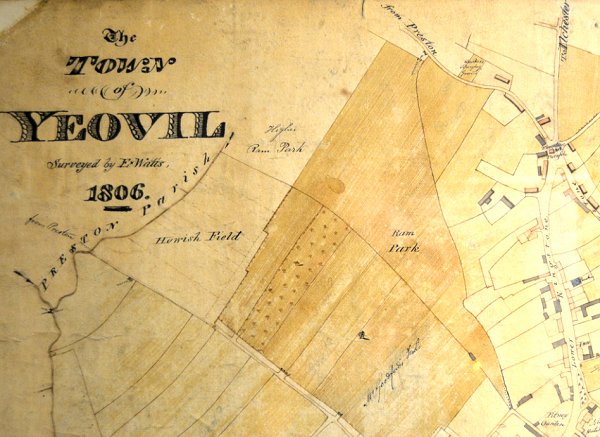
E Watts' map of Yeovil of 1806 shows Ram Park as a large triangular field right of centre and Higher Ram Park at top centre. The small triangular field with its northern edge bordering Preston Road was Ram Park Orchard. A footpath ran along the northern edge of Ram Park, connecting Clarence Street with Preston Road. Top right is Preston Road, at right is Lower Kingston (today's Kingston) and at bottom centre is Hewish Lane (today's Huish) ending at Hewish Field.
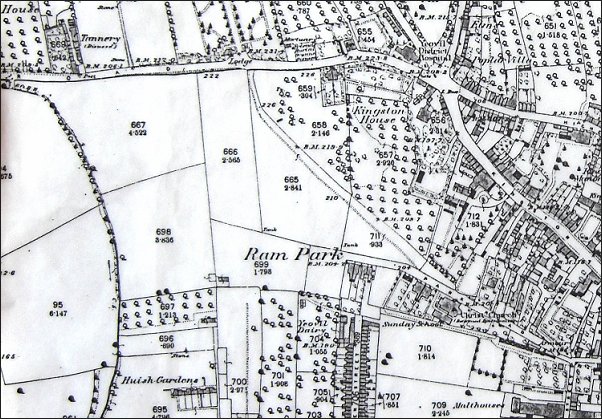
The 1889 Ordnance Survey shows Ram Park subdivided into smaller fields and Park Road has encroached into the eastern corner. Although not shown on this map (since it was not built when the fields were surveyed), Park House had actually been built in 1888 just beneath the 'k' of the word 'Park'.
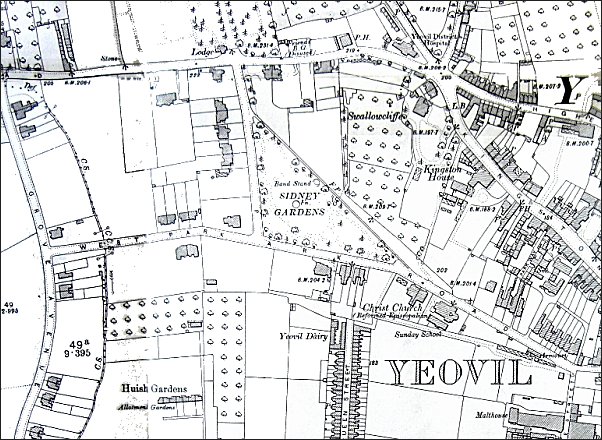
By the time of this 1903 Ordnance Survey Ram Park is no more. Park Road had been further extended west and then turned north to join Preston Road, at the same time West Park was constructed and new Edwardian villas were beginning to line both roads. Park Lodge is seen at centre, below Sidney Gardens. At this time it had been built for fifteen years and was the last house in The Park.
gallery

James Griffin's first advertisement for his music school at Park Lodge, placed in the 7 January 1887 edition of the Western Gazette.
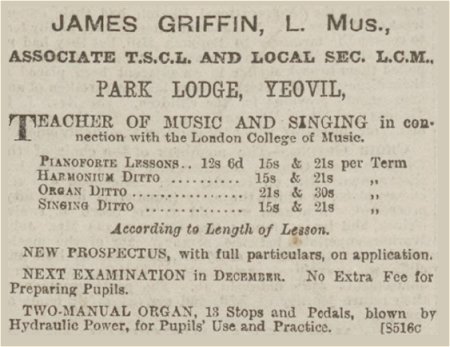
An advertisement placed by James Griffin in the 30 August 1889 edition of the Western Gazette.
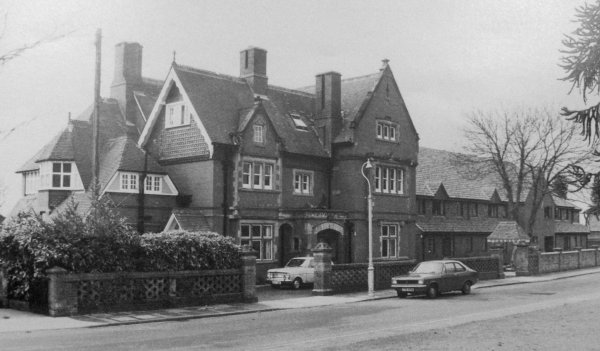
Park Lodge photographed in 1982, at the time of its official opening.
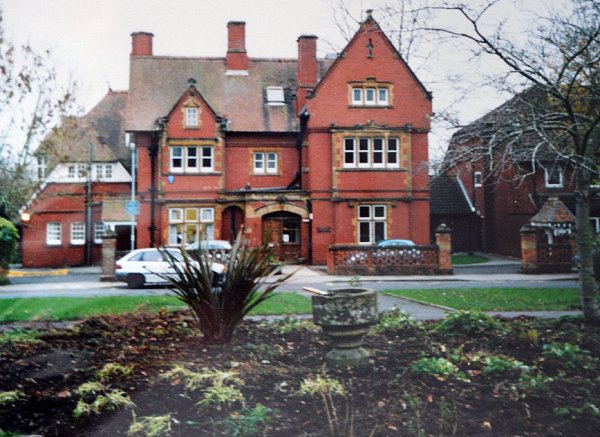
Courtesy of Bill and Audrey Robertson
Park Lodge, facing the Park, was converted into sheltered accommodation in the very early 1980s. Notice in the foreground, sitting in the flowerbed, is the old font from Christ Church on a severely truncated plinth.
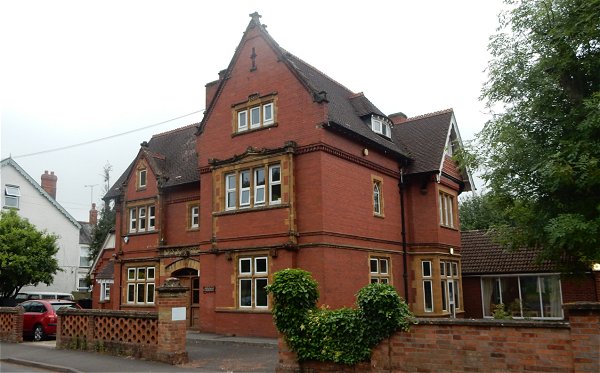
The original Park Lodge building. Photographed in 2018.
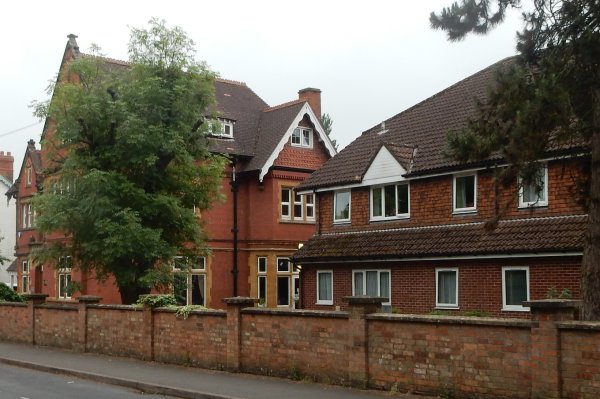
Park Lodge, at left, with part of the 1980's residential wing at right. Photographed in 2018.